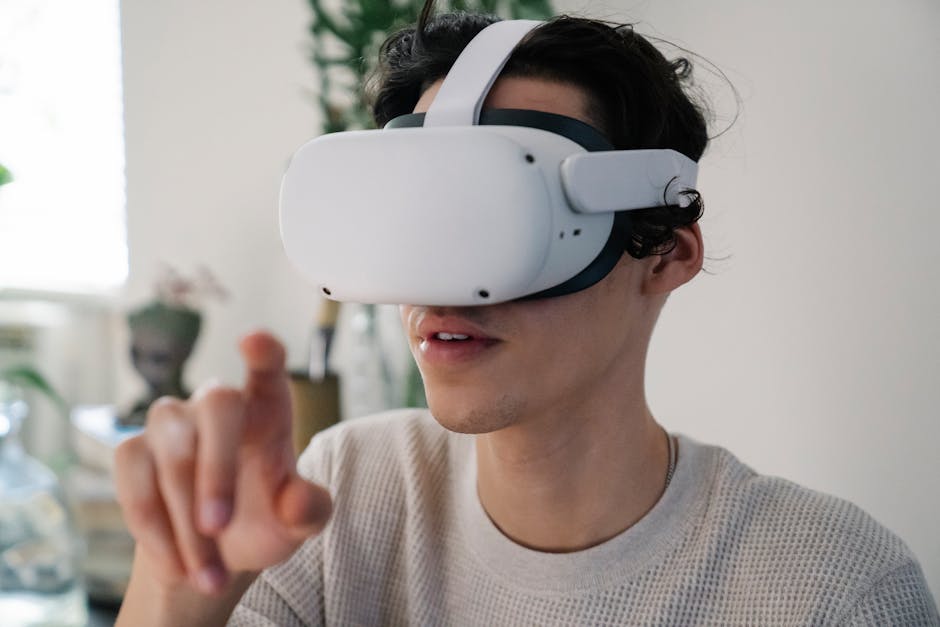Personalize SEO Strategies with Biometric Patterns: Uncover Insights
As the digital landscape evolves, the intersection of technology and user experience becomes increasingly essential for successful SEO and SEM strategies. In 2025, a significant player in this realm is found not only in the algorithms that dictate search rankings but also in the biometric data that revolutionizes how we tailor our approaches to target audiences. By leveraging biometric patterns—specifically fingerprints and facial recognition—marketers can craft personalized strategies that resonate deeply with users.
Understanding Biometric Patterns in Digital Marketing

Biometric technology has been rapidly adopted across various sectors, including finance, healthcare, and now, digital marketing. In this tech-driven age, brands that harness these increasingly sophisticated biometric patterns find themselves equipped to provide highly personalized consumer experiences.
The Subtle Art of Personalization

At its core, personalization is about understanding and anticipating customer needs. When you consider how fingerprint scans and facial recognition unlock devices and services, it’s easy to see the potential impact these technologies can have on SEO strategies. For instance, by gathering insights on user behavior through biometric data, marketers can create content that matches individual preferences.
Imagine a user who frequently interacts with a specific type of content—perhaps travel-related blogs. With the right biometric data analysis, a website can prioritize that content in response to the user, enhancing their experience and promoting higher engagement rates.
Real-World Applications: Seeing is Believing

Online Retail: In e-commerce, the application of biometric patterns is revolutionizing user experience. When a user logs in to their shopping account using facial recognition, the platform can instantly access their purchase history. Coupling this with an optimized SEO strategy allows retailers to feature personalized recommendations right on their homepage, ensuring that users see products tailored specifically to them.
Streaming Services: Platforms like Netflix are already utilizing user data to suggest viewings based on historical preferences. With integrated biometric recognition, they can understand user emotion—like excitement or boredom—through facial expressions. This insight can significantly influence marketing segmentation and content curation while informing accurate SEO strategy adjustments.
SEO Strategies Enhanced by Biometric Insights

Now that we've understood the role of biometric patterns, let’s delve into practical SEO strategies that can be tailored using this data.
Contextual Marketing Through Data Analysis

Contextual marketing is driven by an understanding of user habits and preferences. Techniques such as user experience mapping can benefit greatly from biometric insights, allowing marketers to identify prime conversion opportunities. For example, if a consumer shows a positive reaction towards recipes featuring healthy meals, an effective SEO strategy might focus on optimizing content that features such recipes.
Leverage tools to analyze relevant user data. This might include heat maps showcasing where users spend most of their time on a page or biometrics revealing emotional responses to certain content types. This information can serve as a basis for tweaking keyword strategies and improving organic search visibility.
A/B Testing with Biometrics

Imagine having the ability to tailor A/B testing based on a user’s emotional response. By integrating advanced biometric tracking, marketers can obtain nuanced feedback on which variations resonate best with users when it comes to call-to-action buttons, landing pages, or promotional emails.
This not only helps in optimizing SEO strategies but also enhances overall engagement by delivering content that resonates on a personal level. High user interaction signals to search engines that the content is relevant, ultimately boosting rankings.
Predictive SEO Through Behavioral Patterns

Predictive analytics is nothing new in the world of SEO, but combining it with biometric data creates a powerful synergy. By interpreting user behaviors and preferences revealed through biometric patterns, marketers can anticipate future choices. Imagine knowing that a user is inclined toward sustainable product choices—the keyword strategy can then focus on eco-friendly product searches, facilitating a strong organic search presence.
Invest time in analyzing how certain biometric signals correlate with search trends. For example, if people are increasingly using voice search for “sustainable eco-products,” adjusting your SEO strategy to capture that trend could lead to substantial traffic increases.
The Ethical Dimensions of Biometric Data in Digital Marketing

As enticing as the potential benefits may seem, marketers must navigate the ethics of biometric data use judiciously. Privacy concerns loom large, and maintaining trust is paramount.
Navigating Privacy Regulations

With ever-stricter regulations such as GDPR and CCPA, understanding how to collect, store, and utilize biometric data ethically is essential. Brands must prioritize transparency, ensuring users know how their data will be used while adhering strictly to legal requirements.
Building Trust Through Ethical Practices

Implementing biometric technology should not come at the cost of user trust. Construct marketing campaigns with informed consent practices at their core. Prioritize clear communication, highlighting how biometric data enhances personalization while respecting user privacy. This approach not only builds loyalty but solidifies your brand’s reputation.
Incorporate ethical influencer marketing strategies to augment your overall strategy. Consider reading about how ethical influencer marketing can enhance SEO and SEM through shared values, leading to deeper connections with your audience.
The Future Landscape: What to Expect

As we move into 2025, we can anticipate the evolution of SEO strategies through the further integration of biometric data. Here are some trends to watch out for:
Augmented Digital Experiences

The growth of augmented reality (AR) and virtual reality (VR) combined with biometric data will lead to immersive digital experiences. This could realize personalized marketing in entirely new dimensions. Imagine trying on clothes virtually and receiving tailored promotions simultaneously—SEO will need to adapt to this interactive content age.
Read about this in-depth in our article on transforming user engagement with VR.
Quantum Computing and SEO Optimization

Quantum computing holds the potential to revolutionize SEO optimization by processing enormous amounts of data rapidly. This revolutionary technology could refine predictive analytics and optimization models.
Stay ahead and understand how this technology can be harnessed for SEO strategies by checking our article on quantum computing and SEO.
Final Thoughts: Embrace the Future
The incorporation of biometric patterns in SEO strategies opens up a new realm of possibilities. Brands that adapt to these innovations will not only enhance user satisfaction but also improve their visibility across search engines.
By volitionally embracing ethical practices and staying informed about the latest developments, marketers can steer their brands toward a future that prioritizes personalization, engagement, and user trust. Explore the various dimensions of digital marketing, from emotional targeting to understanding the neuroscience behind consumer choices through our diverse range of topics.
Harness these practices today, and you’ll not only drive success but cultivate a more meaningful connection with your audience.



